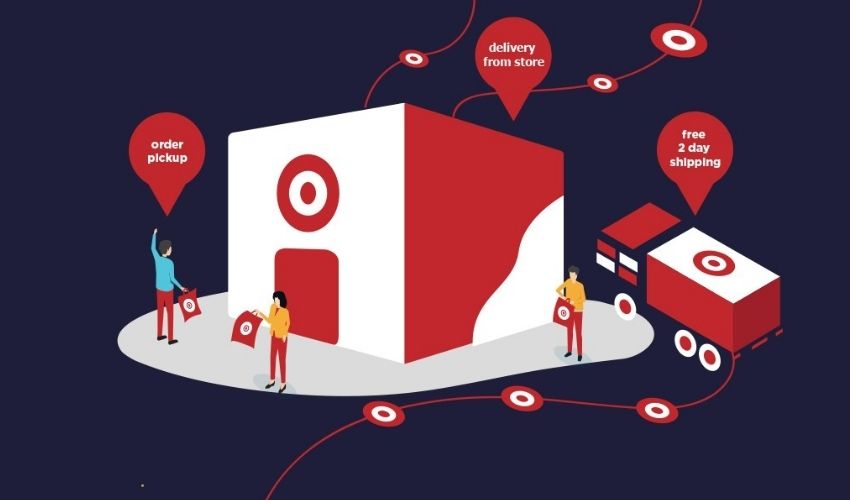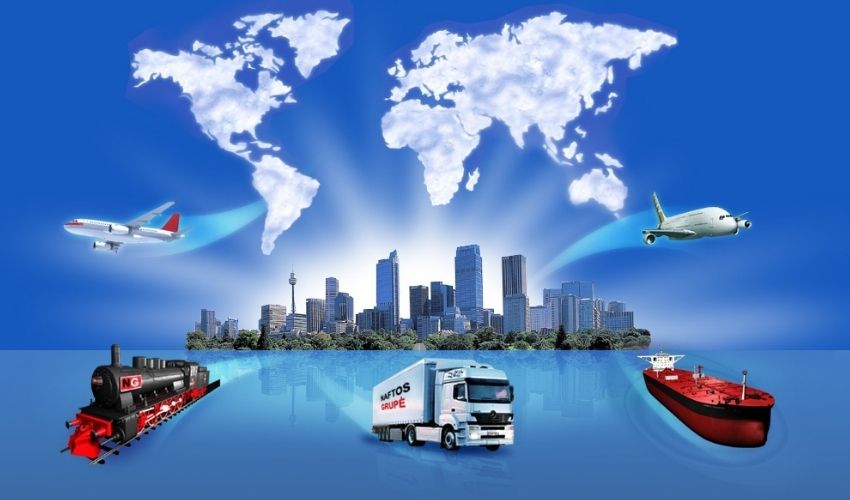You have sold products domestically for years, and now you want to boost your store to the global markets. This article will give you guidance on selling internationally.
E-commerce is still growing and there is practically no limit to where your business can expand. Expanding your business abroad requires more time and effort than domestic, but it’s definitely worth it! Not only will it help increase sales, but it’s also an opportunity for your brand to thrive and gain new ideal buyers.
1. What Are The Benefits Of Selling Internationally
Thanks to the internet, there’s nothing stopping selling internationally. Maybe you see a small number of international visitors visiting your eCommerce store. But, because of having no international services, the opportunity came and gone.
It can be said that there has never been a better time to sell in the international market than now with unlimited benefits in terms of ideal customers and profits.

1.1 Increased Revenues
Selling internationally increases the possibility of sales volume. If you just focus on selling your product in a market with countless competitors, the desire to sell more products and generate more profits will take some time.
However, participating in international trade with suitable selling strategies creates another market for you to sell your products in parallel with the existing market. In addition, opening your online store to global commerce means adding more shopping hours to the day and shopping seasons of the year. More working hours, more customers and more profit are made.
1.2 Expand Your Market Reach
Selling globally, you not only connect with customers around the world but also connect with employees and suppliers from many different locations. Selling internationally improves your eCommerce business performance and opens up various growth opportunities. Your products can be sold on the global market such as eBay, Amazon, Etsy, …

This is also an opportunity for you to get acquainted and learn from selling international experiences. Once you get used to it, growing your business will never again be limited by location.
1.3 Increased Brand Visibility
Having a great website or eCommerce store doesn’t mean your brand’s visibility will increase. The way your customers find your products and your company is the most important thing, especially when your products don’t show up on the first page of search engines.
However, eCommerce platforms offer SEO tools like keyword linking to increase your brand visibility. A professional eCommerce store will have strategies to run well in helping potential customers find themselves, to turn visitors into buyers.

They always have campaigns and plans to increase brand visibility. Any type of business expansion will certainly help your brand and products get more exposure, especially selling internationally.
The majority of customers consider products sold globally to offer superior quality compared to domestic brands and they are eager to buy. Offering your products in multiple markets will certainly expand your brand’s visibility and reputation.
1.4 Stay Ahead Of The Competition
While the internet allows any size of business to sell globally, it is difficult for a small business to instantly penetrate the global marketplaces as it takes a lot of money and knowledge to set up a store.
However, with the determination to bring your store to the global right from the start, you can stay ahead of the competition.
In addition, the company will be less competitive in selling internationally, as you are no longer dependent on one market to sell and generate revenue. While your product may have to fight in a crowded domestic market, you may find that you are less competitive in other countries and you can take advantage of that to keep your business growing.
2. How To Start Selling Internationally
We hear a lot about international sales and the benefits they bring to other businesses. You also want to expand the market, expose your business name to international friends as well as create more profits for your business.

If you are researching this issue, pay attention to the following notes:
2.1 Choose Products
The key to the success or failure of your international business depends largely on choosing the right products to sell.
Therefore, before deciding to sell internationally, you need to:
- Research the product seriously, not just choose products based on interest to find niche products that are in demand and will generate high sales. The most popular items, the current trend is easy to win, but it is not for long-term success. So, targeting a niche can be a great way to successfully sell.
- Take a look at Google Trend and do some research on the top niches with high potential – That way can be good for gaining a competitive edge in selling internationally.
2.2 Choose Target Marketplace
Choosing the right online marketplace to open a store is a crucial decision to make as you take a boost and begin selling internationally.

- Determine who your international customers will be, What customers require for cross-border sellers. Also, do the research and find out which countries got the highest rate of shopping online globally. You need to know that recently China is the most popular destination for global online shoppers.
- Set up analytic tools: Google Analytics or Mixpanel are tools that help you track traffic. Following the analytic allows merchants to know which marketplaces they should keep investing in. However, you should continue to expand your business if new markets account for at least 5% of your total sales.
2.3 Consider Payment Methods
The lack of payment options on the checkout page is one of the biggest reasons for abandoned cart products.
- Research local buyers’ preferred payment methods: Most people prefer to pay in their local currency because they are simple and convenient. If you can’t offer local currency payments, be sure to offer currency conversion so customers can see what they’re paying for.
For example, people used Visa, Mastercard, and American Express as the most popular eCommerce payments in Europe.
2.4 Set Shipping
Getting customers to agree to buy is difficult, how to deliver goods to customers is equally complicated. International shipping can take longer and cost more for customers. So the thing is to find a shipping partner and you can save yourself a lot of time and money (as well as your customers).

- Do your research and arrange logistics with your shipping company. Domestic shipping is much simpler than cross-country shipping. Each country has different regulations and shipping methods.
- Consider shipping costs: Reduce shipping fees as needed or if you have a larger number of orders from a particular country. This helps customers feel more shared and comfortable. This is also a good tip to create loyal customers.
2.5 Set-up International Returns Policy
Whether selling domestically or internationally, your eCommerce store will also face cases like returns. However, the regulations and return policies in different markets are not similar. Therefore, it is extremely important to understand the refund regulations in the new market.
- Make sure your return policy complies with all applicable regulations in that country. The fees associated with the refund should also be clear.
- Cooperate with local service: To effectively manage cross-border returns, you should consider partnering with local return centers or with a logistics service that can provide a variety of return options to customers. This makes the refund process faster and simplifies the way you manage the process.
A clear return policy gives global shoppers a sense of security, especially if they’re buying something from a new brand.
Regarding returns, there is another important aspect to pay attention to your eCommerce customer service. Because of selling internationally, you will be managing and needing to respond to issues from customers in a different time zone.
2.6 Get familiar with taxes and regulations
Of course, not everyone dares to try a new market with so many completely new rules. Once selling internationally, you should take time to review the target country-specific rules and regulations.

- Duties and taxes: Find out how taxes and duties in new markets affect the prices of the products you intend to sell in the target markets. Make sure you know well the regulations that apply to your product. Then, let your customers know about any additional costs they’re expected to pay at first.
- Customs: All international shipments will have to go through customs before reaching your customers. A customs form will be placed outside each package so that officials know its content, values, and purposes. Some carriers even help you deal with this step, you can find them to cooperate.
- Free-trade agreements: If your country has a free trade agreement with any of the target markets, your product category is protected, and tariffs can be reduced or eliminated altogether.
3. Mistakes To Avoid When Selling Internationally
Selling internationally is not an easy task. Boosting your business globally is a great way to expand your reach, especially when you’re already struggling in your home market. But it also comes with a host of risks and challenges.
The notes below are not all but are the most basic mistakes that every business often makes.

3.1 No strategy or plan
One of the main reasons why businesses always struggle in the international market is because they rush to expand overseas without a plan in advance.
Instead, it is imperative to analyze the market to be targeted, define clear objectives, create a detailed action plan, and have an accurate understanding of the costs involved. Selling internationally cannot be improvised, but requires a thorough knowledge base before any campaign can be implemented.
3.2 Not doing enough research on the target market
Not doing enough research is as bad as not having a plan. Make sure you have a thorough understanding of the target market. Many companies skip this step because they assume all markets are the same as their home market.
You should do research to get to understand the following aspects of the target marketplace:
- Competitors, suppliers, partners
- Distribution channels, marketing channels, etc.
- Culture and traditions
- Tax, legal, customs
3.2 Not leaving the currency conversion to the customer

This is very practical but often overlooked and overlooked. As a salesperson, you should understand that for customers, it can be frustrating to see prices listed in a currency they don’t use. In this case, customers often tend to ignore the product and look to other stores where they can meet their currency.
So you have lost a sales opportunity for a silly reason, right? Merchants should care about the pricing localization plan and purchasing power of the target market.
3.3 Not offering preferred payment methods
Customers love ease and convenience. Having to pay for an item with an unfamiliar payment method is confusing and uncomfortable. They may even abandon the purchase. Therefore, if you want to sell your product in other countries, you must provide payment methods that are common in that market. Otherwise, your store will be very difficult to sell.
Some countries prefer online bank transfers, others are using different digital wallets, like PayPal or Amazon Payments.

In Germany, for example, Giropay accounts for 26% of all online payment services used, while in Asia-Pacific, a bank wire transfer is the most popular online payment method.
You can see the different payment methods in different places. Consider and offer your customers preferred payment methods that will make them more likely to purchase with confidence.
3.4 Not using in multiple languages
Consumers tend to purchase at online stores that have information in their language. It may not always be possible to localize your products, but global sellers should try their best to translate product information and e-commerce processes so that product access and understanding become easier.
Providing local language also helps build customer trust, they will feel more confident to text your store.
3.5 Ignoring the local competition

Another mistake that businesses often make when they first enter the international market is to underestimate foreign competitors. They may be smaller, but have a higher awareness of the culture and shopping behavior of customers in that country.
That doesn’t mean you can’t compete, you have an edge, but you also need to adjust your strategy if necessary. To know if your plans are reasonable or not, you can only study the target market, the shopping behavior of target customers.
4. To Sum Up
Selling internationally or entering any new game requires learning and determination. That ensures you have the knowledge and skills to deal with situations that arise. International sales are now much more favorable. Let’s take the chance and expand your business!
Read more

